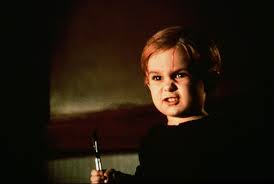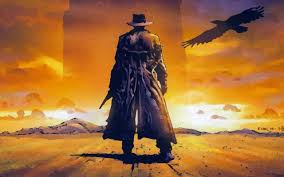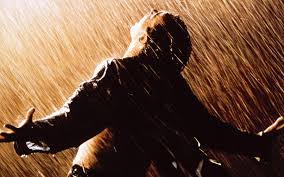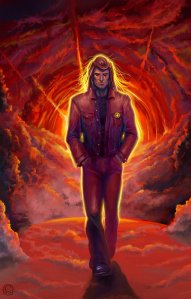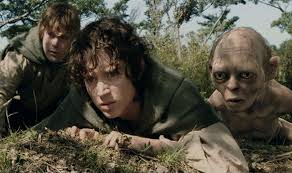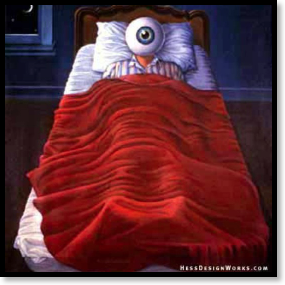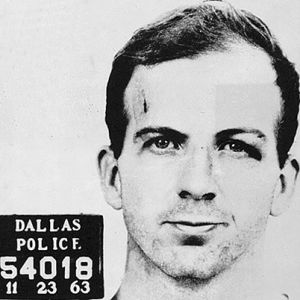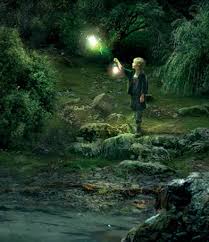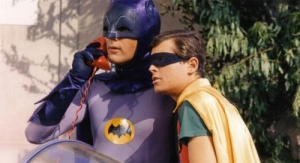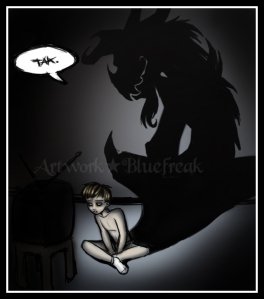So let me paraphrase a conversation I had on Facebook recently. COFG is me (Crazy Obsessed Fan Girl). FOAF is the friend of a friend with whom I had this rather interesting conversation.
FOAF: I don’t like Stephen King, his books are too scary!
FOAF: I love The Shawshank Redemption, that is one of my favorite movies!
COFG: Stephen King wrote the story The Shawshank Redemption is based on. Contrary to popular belief, the man known for shit weasels and scary clowns is an excellent writer.
FOAF: (Silence on her end. Obviously, her mind was blown. Does not compute. Programming must be re-adjusted).
Well, like I said, it was paraphrased. Although you would be surprised how many people need to re-adjust their programming when they learn that scary dude wrote a story that was turned into a movie that received Oscar nods.,.gasp! Oh, the horror (pun intended).
Which leads me to this blog post.
Yes, Stephen King writes scary stories. Who hasn’t had a nightmare (or five) about an evil clown who emerges from the sewers and kills kids? Who doesn’t scream when watching a movie like Pet Sematary, which is also probably the scariest book in existence on this planet?
And all of the above is correct. Stephen King can scare you to where you just might need a change of pants. And oh boy, is he good at it!
But…wait for it…Stephen King is also a great writer. And I am completely leaving anything about horror off that last sentence.
Yes, Stephen King can write scary stories. But he writes good stories. Great stories, actually. Really, really great stories, as a matter of fact.
And no, they are not scary stories. Even in his “scary” stories, King is able to include universal themes. For example, the theme of family is huge in The Shining. And bullying is also a huge theme in stories such as Dreamcatcher and It.
And in his “non-scary” stories, King often writes about frightening situations. For example, domestic abuse is prevalent in stories such as Rose Madder and Dolores Claiborne. Domestic violence is a situation that many people can identify with, and characters such as Norman Daniels are terrifying because they are so plausible.
To sum it up, King is a great writer. However, he is somewhat stigmatized, because of the “horror” label. And no one is more aware of it than the master himself, as he has been typecast for nearly 40 years. However, this has not stopped him from churning out some amazing novels that cannot be categorized as horror. And anyone who takes the time to read these works is in for a treat. As these works are simply great writing, with the ability to grip the reader, and keep him/her trapped in the pages of the book until the last word. And that is exactly what a good writer should do: make the reader not want to put down that book.
So, without further ado, here are my top “non-horror” Stephen King books, for the the non-horror fans in our lives.
10) Lisey’s Story
Marriage is something that everyone is familiar with (especially me, since I’m on my second trip to the rodeo). And almost everyone agrees that when you marry someone, you don’t really know them, even if the marriage lasts a good number of years. Even when you live with someone day in and day out, there is still a secret side (or maybe more than one secret side) of that person. And sometimes the secrets are harmless (like my book boyfriends I spend hours obsessing over). Or sometimes the secrets are not so harmless.
Yes, those not so harmless secrets. You know, when your spouse has the ability to travel to another dimension, and then heal himself but has to be careful not to attract the attention of a creature he calls “the Long Boy” since that creature is hungry for yummy things called human beings.
That kind of secret does suck, and it is actually what the title character from Lisey’s Story encounters. Upon the death of her husband Scott Landon, who was an accomplished writer during his lifetime, Lisey Landon begins to learn (or rather, have her memory jogged) as to what kind of man her husband really was. And she also has an adventure in the alternate dimension mentioned above (complete with an encounter or two with a scary monster), so that she can set her life and memory of her husband right. Yes, there is a monster or two (although the human monster is one of the scariest), but this book deals more with marriage and what we may keep from our spouses (harmless or not). The book also deals with the still somewhat taboo subject of mental illness, which is a prevalent theme in this society, and manages to treat this sensitive subject with compassion. Lisey’s Story may have a couple of monsters, but the themes are themes that resonate with everyone, and the book makes an enjoyable read for almost anyone.
So let’s talk about human monsters again.
“Lupus est homo homini.” Man is a wolf to man. In other words, let’s talk about man’s inhumanity to man. Or technically, with this entry, man (and society’s) horrible treatment of women.
Dolores Claiborne is disturbing. Yet there are no monsters, at least of the supernatural variety. The monsters in this one are all human.
The title character marries a man, thinking she will get to live happily ever after. However, her life becomes anything but happy. Dolores’ husband Joe begins to abuse her not long after he and Dolores marry. Dolores takes matters into her own hands, as local law enforcement is proven to be useless (and is shown to be just that throughout the rest of the book). Dolores does not endure any more abuse by Joe, but what follows is much, much worse. Joe begins to turns his attentions on their daughter Selena, and begins sexually abusing Selena. Again, local law enforcement (and society, for that matter), show their true colors, as no one is one the side of Dolores and her children. Feeling desperate, Dolores seeks out advice from her employer, and decides that “an accident can be a woman’s best friend.” She pushes Joe down a well, and convinces local authorities that is is an accident. She is believed, but the incident comes back to haunt her upon the death of her employer, Vera. The book is a recounting of what led Dolores to her actions, and of the terrible gender inequality that existed (and still exists in our society today) in 1960’s Maine island communities.
When I started reading Dolores Claiborne, I wondered why she did it. About a third of the way through the book, I wondered why she didn’t do away with Joe much sooner than she did. And I rooted for her. I rooted for her to be able to take some control of her life, as no one, including her husband or even our society, was willing to let her have any control of anything in life, including the well-being of her children. And Dolores was able to take a stand, and came out the winner. And I like it when the good guys girls win.
8) Rose Madder
Human monsters. Yes, more human monsters. In case you didn’t notice, this is a huge theme in this blog post and in King’s works. In the book Rose Madder, once again, the biggest monster is completely human, and is someone you are supposed to trust.
Norman Daniels is a cop. And he is a very good good cop. However, Norman is also a corrupt cop who has literally gotten away with murder. Oh, and he beats his wife. Real peach of a guy, huh?
Fortunately, Norma’s wife Rosie does not think her husband is a peach. She endures terrible abuse from him for nearly 14 years. King’s description of the abuse is quite graphic (Norman even sodomizes his wife with a tennis racket). Rosie finally finds the courage to leave her husband, catch a Greyhound bus and start over in another city nearly 800 miles away from her home. Rosie is helped along the way by the kindness of strangers and receives much needed support from a local women’s shelter. She even meets and falls in love with a new man, and finds an interesting painting to hang in her new apartment. However, Rosie’s past catches up with her, as Norman leaves behind a trail of bodies in his attempt to track down his estranged wife. The new painting literally provides a means of escape for Rosie, as it leads her into another world (along with Norman) and Norman is finally given his just desserts.
It is true that there is a supernatural element to Rose Madder. However, most of the book takes place in a setting that almost everyone is familiar with (suburban America) and the characters (abusive men and abused women) are also sadly familiar. Norman Daniels is a corrupt cop and an abusive husband. He is one of the most believable characters ever written by King. Watch your local or even national news, and a Norman Daniels is bound to surface.
The fact that Rose Madder partially takes place in the world of our friendly neighborhood gunslinger is just an added bonus to a fantastic story.
The horrors of war are also something we are all familiar with, including Stephen King. King brilliantly addresses this topic in his collections of novellas titled Hearts in Atlantis. Although King made many allusions in prior works to his feelings on the Viet Nam War, he addresses the subject head on in the collection Hearts in Atlantis. The result is an insightful analysis on the experience of coming in age during one of the most tumultuous times in American history.
Hearts in Atlantis consists of two novellas and three short stories. The first of these is titled Low Men in Yellow Coats, and is the only story that really contains any hint of the supernatural. While the Viet Nam War is not directly referenced in this work, the protagonist Bobby Garfield learns a lesson about taking a stand against evil when his friend and elderly neighbor is pursued by sinister creatures that are clearly not of this world. Bobby’s actions and stances on this will color his life for years to come, and serve as foreshadowing as to how some of his peers will take a stance against the conflict in Viet Nam. The title story tells of a college student who nearly flunks out of college due to excessive amounts of time spent playing a card game. However, the stakes of failure are very high, as anyone who fails out of college at the beginning of the Viet Nam War risks being sent overseas to fight a war in a country that most can barely pronounce or spell. While struggling with his studies, Pete also struggles (in much the same manner as Bobby Garfield) with his stance on what is happening overseas. Like Bobby, Pete also makes a stance that will forever change his life. Blind Willie and Why We’re in Vietnam take place some years after the Viet Nam War is over, and are told from the prospective of those who served during that time. The collection ends with the short story Heavenly Shades of Night are Falling, where we meet an adult Bobby Garfield who finally receives some closure in regards to the events during his childhood that have troubled him for so many years.
While many younger readers may find some of the stories in Hearts in Atlantis a bit dated, the themes (war, bullying, tolerance and taking a stance) are themes that anyone of any age should identify with, making the stories ones that will always be relevant and therefore timeless.
6) Different Seasons
As I stated before, Stephen King has struggled with typecasting. However, the publication of the book Different Seasons put at least some of those criticisms to rest. Different Seasons consists of three novellas, and the last work could be probably be considered a short story. All four stories contain themes that we all familiar with: injustice, bullying, parents’ relationships with their children, people who are not who they seem to be, etc. In other words, they are stories of the human condition.
The first story, Rita Hayworth and the Shawshank Redemption, tells the story of a man who is wrongfully imprisoned for killing him wife, and his struggles inside a system that seeks to keep him oppressed. The story is told from the perspective of another prisoner, and reminds the reader time and time again that we must never give up hope. The second story, Apt Pupil, tells of a former Nazi war criminal who moves to suburban America and lives under an assumed name. The man develops an unhealthy relationship with the boy next door, and his past comes back to haunt him and change his young neighbor in a way that is not for the better. The third story, The Body, is the tale of four childhood friends and the last adventure that they have together before adulthood conspires to lead them on different paths. The final story, The Breathing Method, tells of a young mother who gives birth out of wedlock in turn of the century America, and just how far she will go to deliver her baby safely, even when society and another unfortunate turn of events try to tell her otherwise.
Humanity can be scary sometimes. Oftentimes, humans, whether they are a former Nazi war criminal, a corrupt prison warden or even the innocent boy next door, are the scariest creatures on this planet. But sometimes humans can be wonderful as well, and make marks on our lives that we will never forget. Different Seasons does a wonderful job illustrating both sides of humanity and is just a fascinating study into what makes our species tick.
When you think of kid friendly writers, Stephen King does not usually come to mind. And rightfully so, as much of King’s work would be deemed “inappropriate” at best, and maybe “will traumatize one for life” at worst (as we can all see how reading King at age 12 made me the well-adjusted adult I am today…ha). However, the book Eyes of the Dragon could be probably be an exception to that statement (if we leave out the parts about flaccid penises…yikes, awkward much?)
It said that King wanted to write a book that his daughter Naomi would want be allowed to read. So he wrote Eyes of the Dragon. In many ways, Eyes of the Dragon is similar to the fairy tales that we all grew reading (or maybe our parents read them to us). There are princes in a faraway kingdom. The princes become orphaned and one becomes wrongfully imprisoned, but pulls off a daring escape plan using his mother’s childhood dollhouse, of all things. And there is even an evil wizard thrown in the mix. However, Eyes of the Dragon also has a decidedly darker tone than some of the fairy tales that I grew up with. The protagonist does escape, but his captor never faces punishment. And it could also be argued that the younger brother of the protagonist, who was also responsible for the imprisonment of his older brother, has not really become any wiser for all the troubles he has been through.
Even though it is dark (this is a Stephen King book after all), Eyes of the Dragon is an unusual but fun departure from King’s normal work into a peculiar type of dark fantasy. And like the fairy tales I remember from my youth, it does teach a few lessons that anyone of any age could stand to hear.
Its an age old question: do we have the ability to see the future, and possible try to change it? More importantly, should we have that ability? This is a question that is explored in depth in the book The Dead Zone.
The Dead Zone is actually a scary book. But again, there are no monsters, except for a couple of the human ones. The Dead Zone is also a tragic book. The protagonist, Johnny Smith (how can a name be more Every Man than Johnny Smith?) falls into a coma after a horrible car accident. Johnny stays in the coma for nearly five years. In the meantime, his world moves on without him. This includes the woman he loves, who marries another. Johnny wakes up from his coma, and discovers that he has the somewhat limited ability to see future events. Sometimes this is a good thing, as it saves people’s lives and helps catch serial killers. However, more often than not, Johnny’s unwanted gift brings unintended consequences and isolates him from his fellow man. When Johnny discovers that a popular politician will one day become president and start World War III, he embarks on a quixotic quest to try and stop the man. Again, Johnny finds himself isolated from his few remaining friends and family members. Johnny is ultimately successful in his quest to stop the politician, but the success comes at a huge personal cost for Johnny and his loved ones.
In The Dead Zone, King once again embarks upon a study in the human condition. The ultimate result is tragedy, but the book is one of his most thought provoking reads of all time.
3) Insomnia
It may be odd to think of horror and fantasy (in the style of Lord of the Rings) as being two sides of the same coin, but oftentimes these two categories blur, and it can get hard to distinguish one from the other. The book Insomnia definitely falls into the category of dark fantasy and has therefore earned its place on this list.
Insomnia follows the adventures of Ralph Roberts, a widower in his late 60’s. Ralph has become inflicted with insomnia and is unable to sleep at night. He then begins seeing some strange sights in his hometown of Derry, Maine. Ralph also discovers that his neighbor Lois has also become inflicted with insomnia and is seeing the same strange sights that he is. The two discover that they are actually pawns in a game of sorts, and that the stakes are very, very high, and losing the game could spell disaster for not just them, but all of existence. The story switches from fantasy (alternate dimensions) to reality throughout the book, and also gives the viewpoint of the world from senior citizens, who are often invisible at best, or treated as sub-humans at worst. Ralph and Lois manage to save the day, but like many “saves” in a Stephen King book, it comes at a huge personal cost to Ralph and Lois some years later. We also see Ralph and Lois fall in love during their ordeal, which is one of the most endearing love stories in any book, let alone a Stephen King book.
Insomnia does a wonderful job playing up the darker aspects of the fantasy genre (The characters Atropos and The Crimson King are a great example of this) and also manages to treat the subject of aging in our youth obsessed society with sensitivity and even a little bit of humor.
2) The Talisman
Stephen King is often criticized for not being “literary” enough. This may be because he sells so many books. Or it may be the subject matter that he addresses in his books. However, these critics fail to realize that Charles Dickens was a best-selling author in his lifetime. Or that both Dickens and Mark Twain also took on social issues in their works, and that both authors’ works had some degree of darkness. And both Twain and Dickens are taught in high schools and colleges across the world today. Someday, Stephen King will be held in the same regard, and his work will be seen as “literature” and become part of standard college reading lists. When that is the case, college professors would do well to include the next entry on this list: The Talisman.
Much like Insomnia, The Talisman can be categorized as dark fantasy. It is the story of Jack Sawyer, who embarks on a trip across the United States in order to obtain a magical object referred to as The Talisman, in order to save his mother from dying of cancer. Jack learns (or rather, has his memory jogged) that he has the ability to travel to an alternate reality that he calls The Territories. Magic is commonplace in The Territories, but The Territories also come with their own dangers, as monsters and evil rulers are encountered at almost every turn. Jack also has to deal with evil men who conspire against him in the “real” world, but has friends who guide him on his journey. These friends include a werewolf and a wise old man named Speedy Parker, who is much more than what he seems. In the true spirit of any fantasy/adventure story, Jack is ultimately successful in his quest, and is able to defeat his enemies and save his mother’s life.
Much like the works of Twain, Dickens and even Robert Lewis Stevenson, The Talisman is a story of fantastical high adventure. And much like the works of Charles Dickens and others, it explores controversial subjects, which include sexual and physical abuse of children, crime and punishment in our society and just how far someone will go to save the life of a loved one. In other words, The Talisman may look like a children’s story, but like Speedy Parker, it is much more that what it seems.
And now, for our number entry on this list…
I bring you…
1) 11/22/63
As stated before, Stephen King came of age during one of the most tumultuous eras in our country’s history. Not only did King attend college during the height of the Viet Nam War, he was also just entering adulthood upon the assassination of John F. Kennedy. Like most of his generation, this impacted King, and likely even affected his writing. King alluded to this event many times (Wolves of the Calla and The Drawing of the Three contain a few references to Kennedy) but never addressed the subject head-on. That is, until he wrote the number one entry on this list: 11/22/63.
11/22/63 tells the story of Jake Epping, who lives in present day Maine. Jake has an academic idea of John F. Kennedy, but has never really given the subject much thought. However, Jake begins to give the subject much more thought when his friend Al reveals to him that there is a portal in the local diner owned by Al that allows one to travel back in time into 1958. One can travel back and forth between time periods, and return to the present with only two minutes passing. It is also revealed that traveling back to the present may “un-do” changes in the past. Al persuades Jake to travel back in time and prevent the assassination of John F. Kennedy and possible change history for the better. Jake becomes convinced of this and travels back in time to do just that. Jake takes up residence in 1958, and makes new friends. He also falls in love with a woman named Sadie, and actually begins to re-think his quest. He realizes that the past is stubborn and does not want to be changed, but still continues on his quest. Jake is ultimately successful in preventing the assassination, but at the cost of Sadie’s life. Jake travels back to 2011 but barely recognizes his present, as the prevention of the assassination has indeed led to drastic changes in history that are not for the better. Jake travels back to the portal and re-enters the present, therefore restoring the timeline. This also restores the life of Sadie. Jake realizes his presence in the past can only lead to disaster, and chooses not to travel back in time and pursue Sadie. The book ends with Jake encountering an elderly lady who can only be Sadie, and sharing one last dance with her.
11/22/63 is an epic story. The story is equal parts historical fiction and a suspense thriller. It also contains one of the best cases of a “doomed love” affair, as the romance between Jake and Sadie so sadly demonstrates. The book is rich in detail with what life was really like in late 1950’s America, as many perceive that to be a simpler time period. However, there is an incident where Jake encounters a sign for the “colored” restroom, and follows the sign. The sign leads a tangle of grass and brier patches, providing Jake (and the reader) with a reality check as to what life was really like during that time period. King provides a fascinating character study of Lee Harvey Oswald, who, to most people, is just a historical figure. However, King manages to make him a little more human and even somewhat sympathetic, even though his actions are still ultimately evil. In short, 11/22/63 is complex and rich book, that deals with major events in history (JFK, Viet Nam War, etc), while providing a human perspective on what many (especially younger readers like myself) view in an academic manner. 11/22/63 truly makes history come alive and actually become relevant.
King has stated that 11/22/63 was the book that he always wanted to write about Viet Nam, JFK, etc. However, this is Stephen King. He always has a trick up his sleeve. And the trick in 11/22/63 is a great one: Jake encounters none other than Richie Tozier and Beverly Marsh, shortly after the Losers Club’s first confrontation with Pennywise the Clown. And King is correct: 11/22/63 is the book about JFK, Viet Nam, etc that needed to be written. But the fact that he was able to incorporate the evil clown from a novel that has inspired so many nightmares in what many would consider to be a historical (not horror) novel is just further testament to the true genius that is Stephen King.
So there it is. The top 10 non-horror novels written by Stephen King. So for the non-horror fan in your life, maybe one (or five) of these would make a great stocking stuffer! Or if you have not read these, self present giving is always allowed! And the only scary thing about these is that maybe you will just get hooked and be unable to stop reading! But sometimes being scared is a good thing…happy reading, all!





